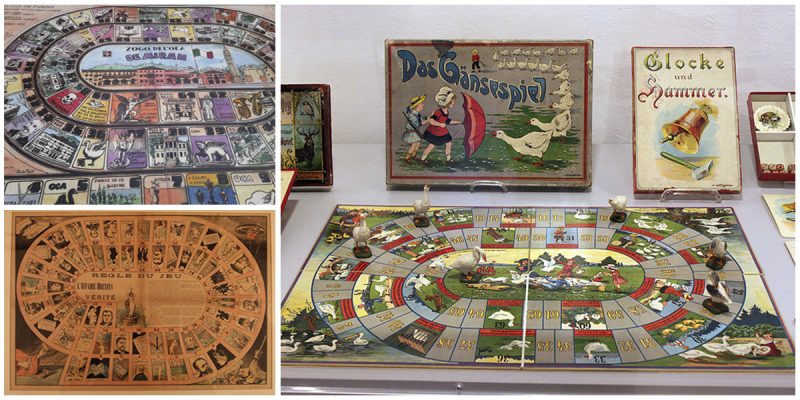The Game of the Goose, or Goose game, is a children’s race game that appeared for the first time in 1640 and it is considered the prototype of many of the commercial European racing board games of later centuries.
According to many, it is connected with the ancient spiral race games like the Egyptian “Mehen“, one of the first known spiral track and multi-player board games played in the early Old Kingdom times.

The game’s origins are uncertain. The oldest written information about the game dates back to the 16th century. As reported by the Italian author Pietro Carrera (1571-1647), a copy of the game was given as a gift by Florentine ambassador Francesco de Medici to King Philip II of Spain in the late 1500s (sometime between 1574 and 1587). The game was also mentioned in the London archives of 1597. The game had spread all over Europe by the beginning of the 17th century and became one of the most popular games during that time.
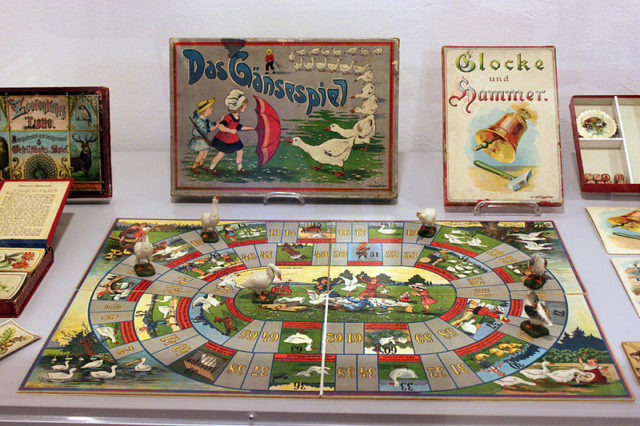
The game is played on a spiral-shaped board. Each player chooses a uniquely marked, colored, or shaped playing piece which is moved according to throws of one or two dice. Each player rolls the dice, and the highest roll determines who plays first. With the starting point at the outside, the object of the game is to travel along the spiral from field 1 to field 63.
The first player to reach the center is the winner. The player’s piece must land exactly on the field 63 because if the dice roll is too high the player returns to the start to begin again. Many fields have special benefits for players who land on them but the board is also full of obstacles which players must avoid, such as fields which send them back a number of squares and the “Death“ field, which sends the player back to square number 1. Any number of players may participate.
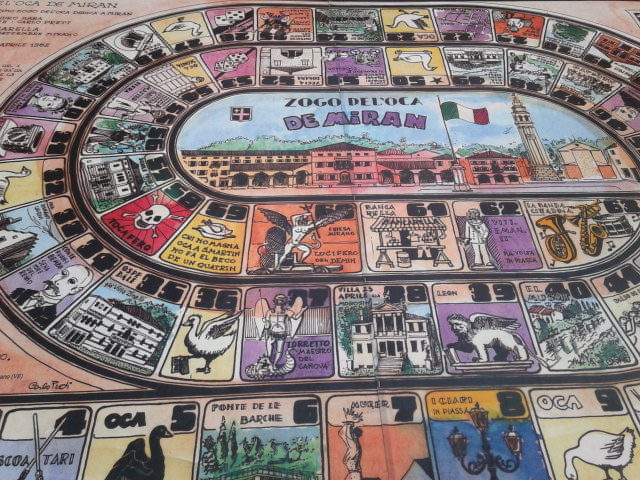
The game was mostly played as family entertainment but as the game appeared all over Europe, it also became very popular as a gambling game with stakes to be paid into a pot. The stake would be decided at the beginning and each player would put one stake in the Pool. The winner takes the Pool at the end of the game. Over the centuries, goose games have appeared in many different countries but the basic model of the game was reinvented and evolved into different versions with different rules and illustrative designs.
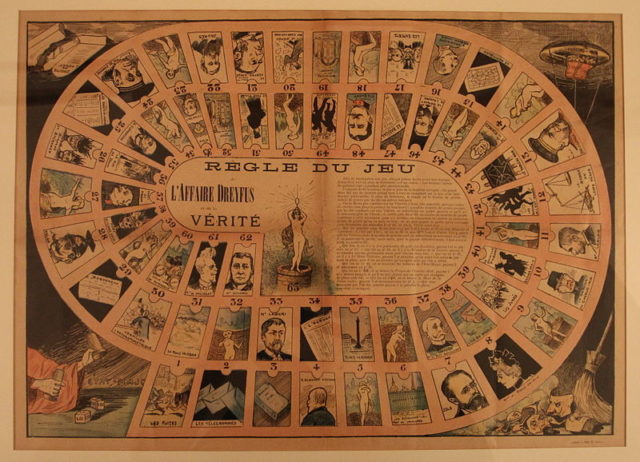
In the “Goose Game“ from the late 18th Century, for example, when the player overthrew and his piece landed beyond the final field, his piece bounced back by the amount of player’s throw until it reached the field marked with a goose which allowed him to start moving forward again.
In another version of the game, landing on a goose allowed the player to move his piece the same amount of the roll again (for example, if the player rolled a 2 and landed on a goose square, he could move 2 more spaces).
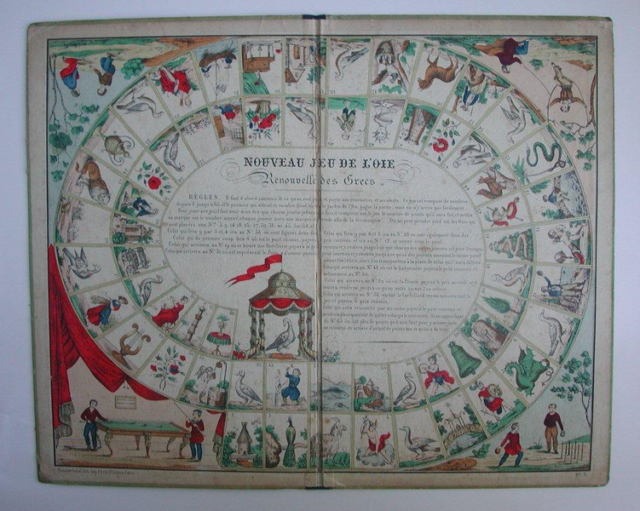
In the 17th century, the game was regularly published by Dutch printers of maps and books.
Also, many commercial versions of the game appeared in the 1880s and 1890s. The lithographically printed 19th-century games were often copies of the 18th-century boards.
